Most of the time when I land in a new country, I do so having eagerly anticipated visiting that place for a very long time.
But to be honest, Phnom Penh, Cambodia was never a place near the top of my bucket list, and our visit mostly came about as a result of sheer circumstance: I had booked some hugely discounted Cathay Pacific First Class mistake fares departing out of Hanoi, Vietnam, and since I had already been to Hanoi before, I thought, “Hey, why not check out a different country nearby… like Cambodia, I guess.”
As we started whizzing through Phnom Penh’s impossible traffic on tuk-tuks on our first morning in town, though, I very quickly came to realize that there was much more to this place than meets the eye.
First Impressions of Phnom Penh
The charms of Cambodia’s capital aren’t necessarily apparent at first glance.
The city is a messy, gritty patchwork of narrow streets, most of which aren’t even known by a name, but only by a number (Street 21, Street 136, etc.) Along these streets, you’ll find homes and businesses lined up shoulder-to-shoulder and high-rises springing up as part of an ongoing building boom – but you’ll also inevitably run into piles of garbage strewn about and tuk-tuk drivers recklessly cutting you off without a second thought.
The city moves at a breakneck speed within this setting of organized chaos, and even as someone who usually revels in the frenetic pace of urban life, Phnom Penh was a lot to take in at first.
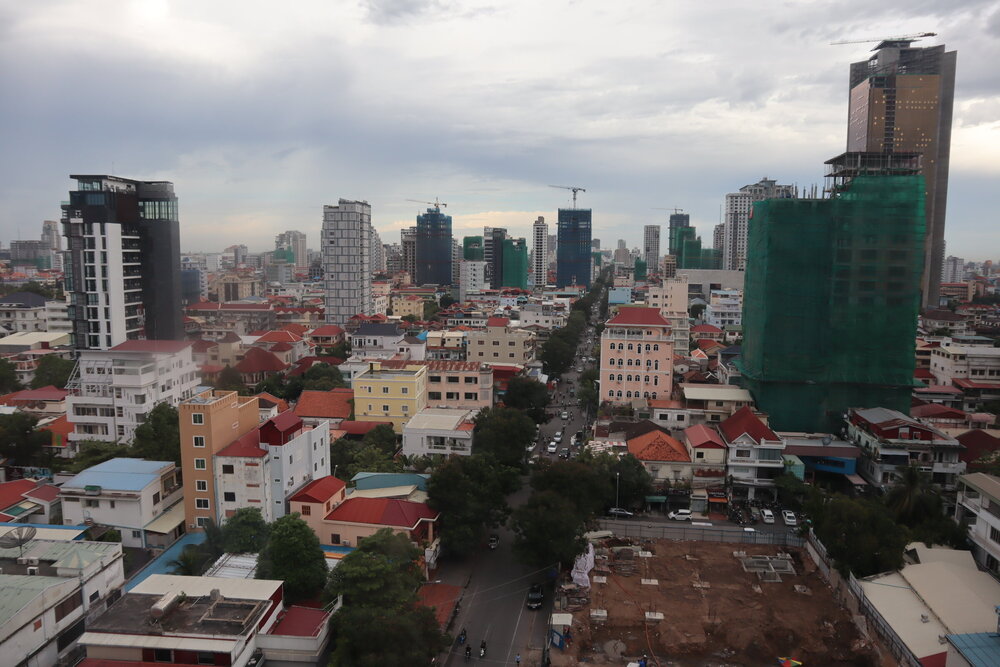
Phnom Penh, Cambodia
Now, when Jessy and I travel, our first instinct is to walk around wherever we go in order to get familiar with the lay of the land.
But our morning walk from the hotel to the Royal Palace wasn’t exactly the most well-advised: not only did we have to sidestep the garbage heaps on the narrow sidewalks while dodging the sweltering summer heat, but we arrived at the Royal Palace to find that it had just closed for the lunch break (the opening hours are 7:30am to 11am, followed by 2pm to 5pm).
After admiring the Royal Palace from the outside and taking shelter in the still impressive grounds of the Ounnalom Palace nearby, Jessy and I reassessed our game plan for the day. It was decided that walking around in Phnom Penh was clearly going to be a thankless task, so we booked a tuk-tuk on the Grab app to bring us to our next destination for the day.
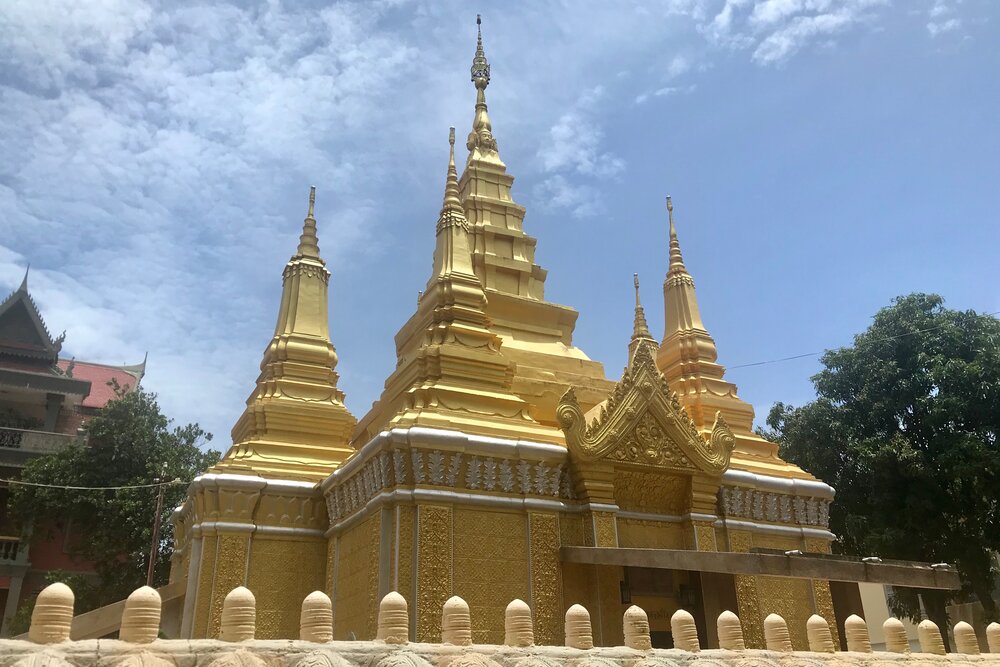
Ounnalom Palace
Tuol Sleng Genocide Museum
I can’t say I was too familiar with the Cambodian genocide before this trip, beyond being vaguely aware that some grave atrocities had taken place here not so long ago. Tuol Sleng, the site of the former prison used by the Khmer Rouge that’s now maintained as a site of education and commemoration, immediately presented us with the stark realities of the darkest period in Cambodian history.
It was in 1975 that, following victory in the Cambodian Civil War, the Khmer Rouge, led by Pol Pot and his fellow cadres, swept through Phnom Penh and drove the population into the countryside in their efforts to turn Cambodia into a radically communist state.
[foogallery id=”16755″]
Tuol Sleng, a local school at the time, was repurposed into the Khmer Rouge’s Security Prison 21, where ordinary civilians became prisoners shackled to their chains, forced under brutal torture to give confessions, and eventually sent to the Killing Fields to be executed. Today’s Tuol Sleng Genocide Museum, with its sombre exhibits and very well-presented audioguide, walks the visitor through the unspeakable atrocities that had taken place within these halls.
The experience can be described as crushing and harrowing. I’ll let some pictures from Tuol Sleng speak for themselves.
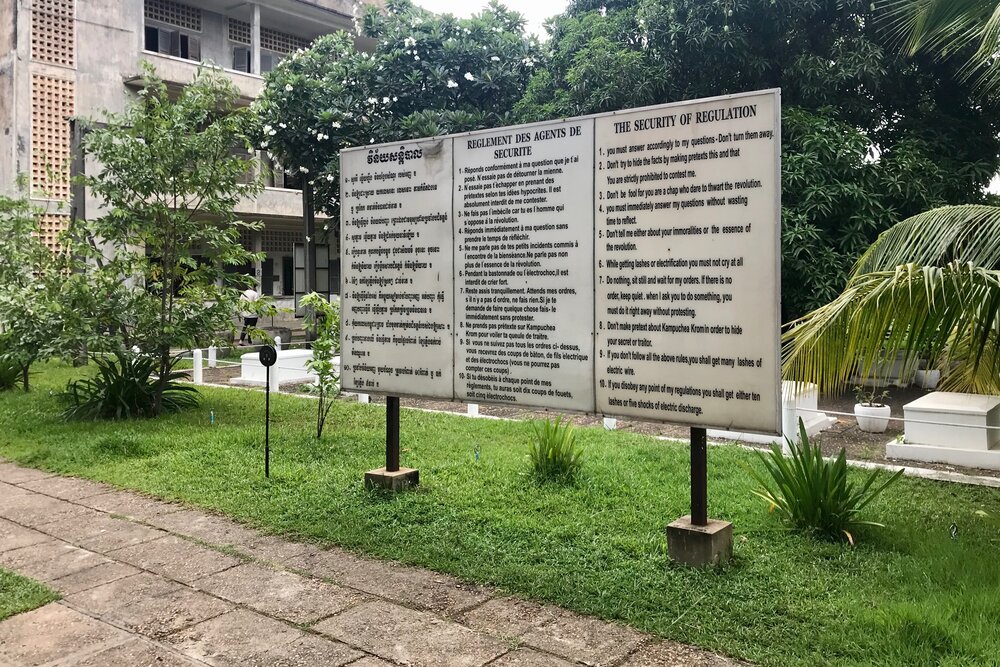
List of rules that Tuol Sleng prisoners had to follow
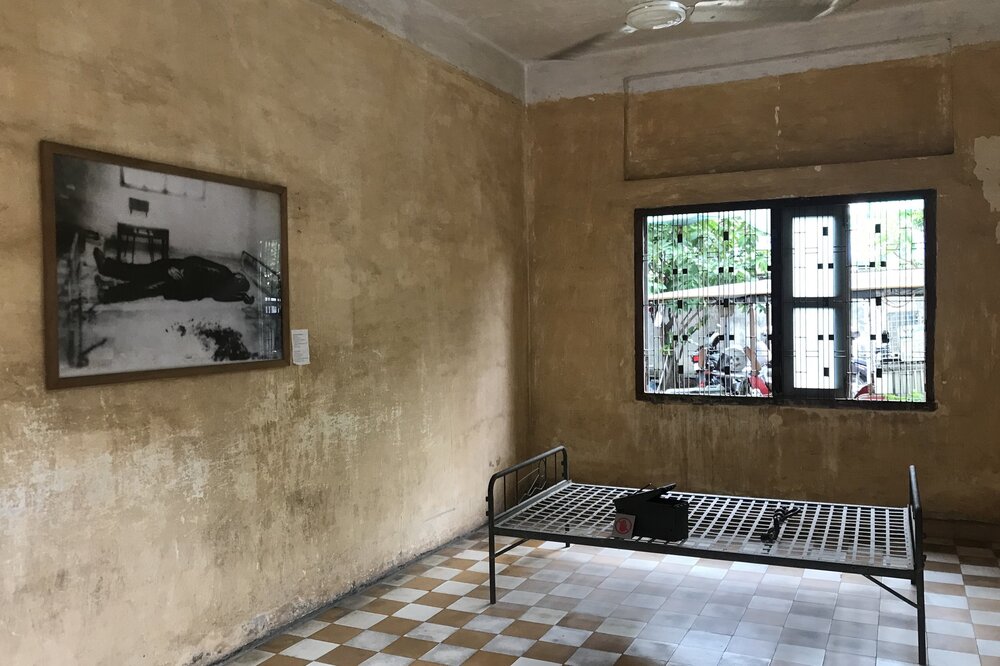
Torture & interrogation room at Tuol Sleng
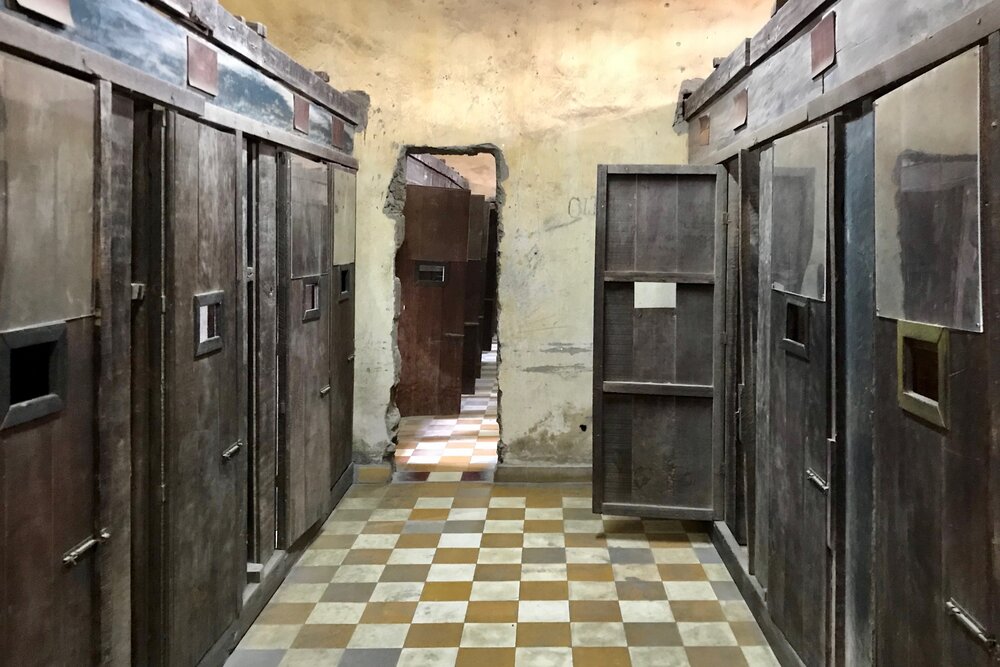
Prisoner cells, where multiple prisoners would be kept shackled by their hands and feet along metal railings on the ground
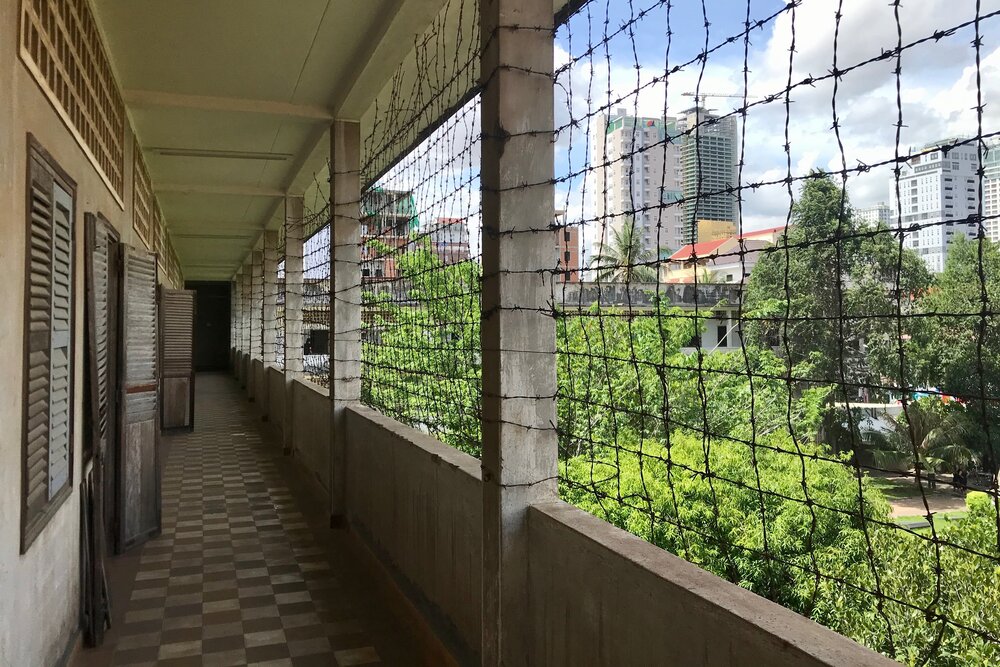
Barbed wire on upper floors of prisoner cell blocks
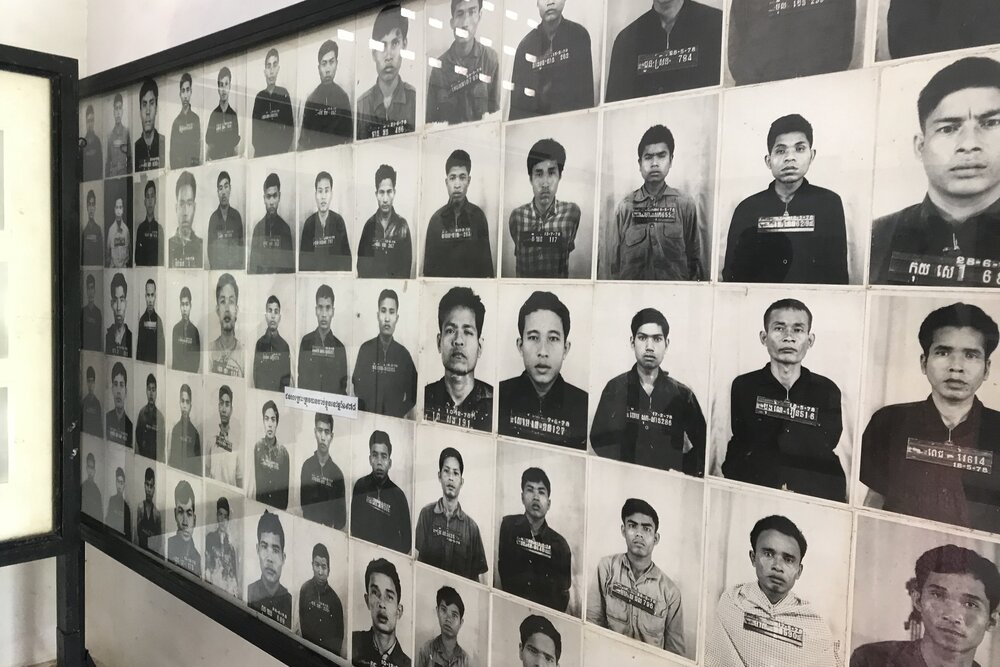
Commemorating the victims of the Cambodian genocide
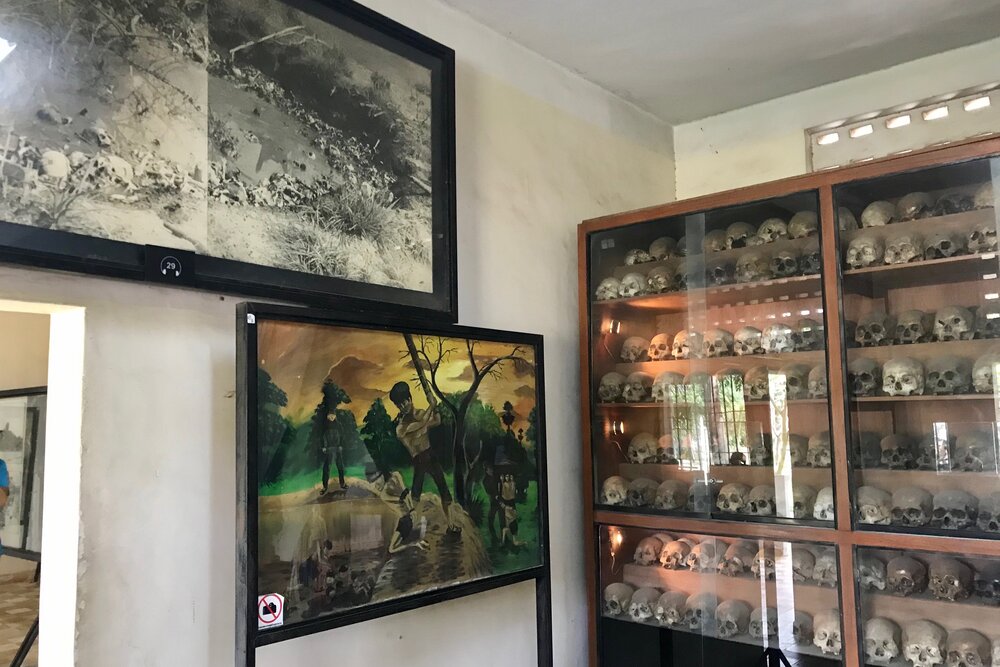
Pictures, scenes, and skulls from Choeung Ek Killing Fields; you can see the fractures on the skulls resulting from the brutal execution methods by blunt trauma (e.g., pickaxes) that the Khmer Rouge employed
Throughout the visit, I was naturally drawing a lot of comparisons to my visit to Auschwitz-Birkenau a few years ago – to the extent that these things are even comparable at all.
And who knows, I couldn’t quite put my finger on it – perhaps it was the recency of these events, having taken place barely 40 years ago; or the Khmer Rouge’s sheer brutality in executing prisoners by blunt trauma instead of Nazi Germany’s efficiency-oriented approach; or even the fact that Cambodia felt much closer to home for me (indeed, about 200,000 ethnic Chinese Cambodians perished at the hands of the Khmer Rouge as well) – but I must say the feelings of shock and distress were much more raw here at Tuol Sleng.
[foogallery id=”16758″]
While the exhibits at Tuol Sleng focus mostly on the atrocities that took place here, I later felt compelled to dig further into the historical context in which the Khmer Rouge was allowed to rise to power.
And the history here isn’t pretty at all, whether it was the United States’s carpet-bombing of the region as an expansion from the Vietnam War, ostensibly intended against the Khmer Rouge but which in fact allowed them to gain immense popular support among the devastated citizenry; or China’s continued influence and financial support of the brutal regime throughout the late 1970s, tacitly allowing the atrocities to continue in the name of the two countries’ shared communist ideals at the time.
As history shows, the world’s major powers will always play their little games, and it’s the ordinary people who suffer as a result of their machinations. And looking around us today, I can’t help but wonder if we’ll ever learn any of these lessons, or if we’re simply doomed to repeat those mistakes.
By the time that Vietnamese forces overcame the Khmer Rouge in January 1979 and liberated Tuol Sleng, only fifteen people out of some 20,000 innocent souls who passed through here had survived.
We saw one of them – Bou Meng, an artist by trade who was spared from torture and execution because he was able to paint a good enough portrait of Pol Pot – sitting here in the sunshine at the site where he had once witnessed such horrors, ready to engage in conversation and share his experiences with visitors.
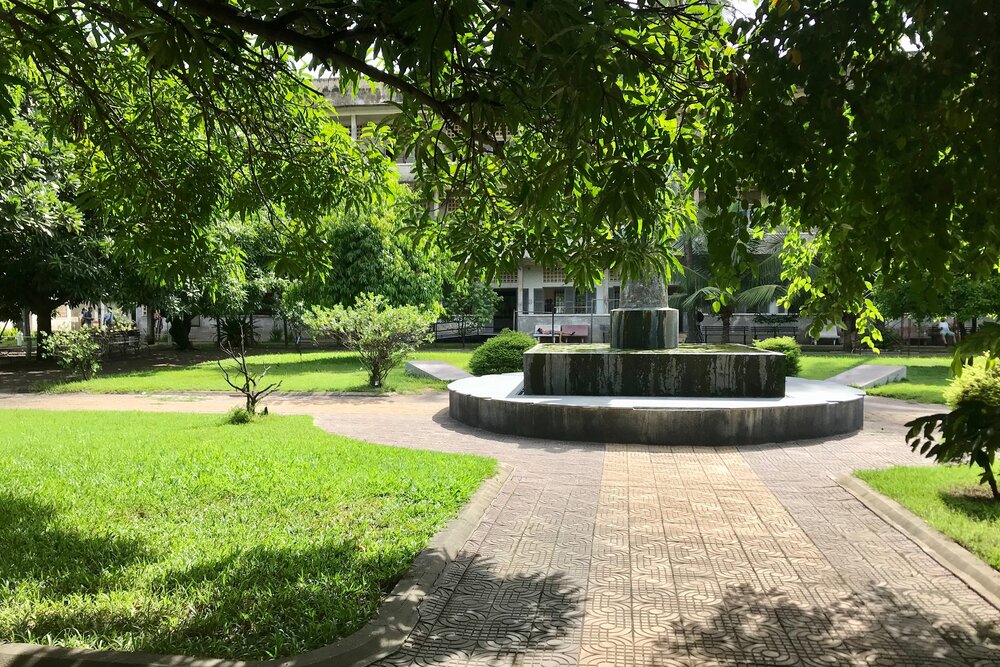
Reflection Garden at the Tuol Sleng Genocide Museum
Bou Meng’s presence was an incredible show of strength to witness as we left Tuol Sleng. And indeed, as we made the short walk over to the highly-rated Eleven One Kitchen for lunch, I came to realize that this strength, this sense of urgency to recover from the darkness of the recent past, was exactly what lay behind the relentless pace of life in Phnom Penh, as though everyone here was ready to put their common tragedy behind them out of sheer determination and fight for a better future.
(I must note that the Khmer Rouge Killing Fields in Choeung Ek, a short drive outside Phnom Penh, are also well worth visiting for a close-up look at the site of the regime’s mass executions, but between our relatively tight schedule and the fact that we found Tuol Sleng already profoundly difficult to digest, Jessy and I decided to save the Killing Fields for the next visit.)
Lost Plate Hidden Bar Tour
My impressions on Phnom Penh’s renewed lease on life would be affirmed later on that evening, as I took up a recommendation of my friend Tiffany from One Mile at a Time and booked a tour with Lost Plate Cambodia.
Tiffany had left glowing praise for Lost Plate’s Phnom Penh Evening Food Tour, which brings you through the many different eras of Cambodian history through a variety of Khmer dishes.
Cambodia’s most well-known dish is probably fish amok, which is a type of fish curry stew cooked with distinctive banana leaves that are endemic to the country. But this food tour is meant to bring you far deeper into Khmer gastronomy, showing you the staple dishes of ordinary Cambodians, both throughout history and in the modern age.
Unfortunately, the Evening Food Tour isn’t available on Fridays, which is when Lost Plate organizes a Phnom Penh Hidden Bar Tour instead. Essentially, this was one of those tours where you pay some locals to hang out and visit some pubs and bars with you, but since Jessy and I didn’t have much better to do on what seemed like a lively Friday evening, we decided to give it a go.
Without giving too much of the tour away, I did find the experience to be very enjoyable, thanks in large part to the free-flowing drinks and the good company from our tour guides.
We began the evening at a craft brew pub set up by a couple of expats, which served up a few interesting flavours, followed by a distinctive speakeasy that was “by Khmers, for Khmers”, featuring live music in a moody spot hidden behind an entrance that looked like a Coca-Cola fridge.
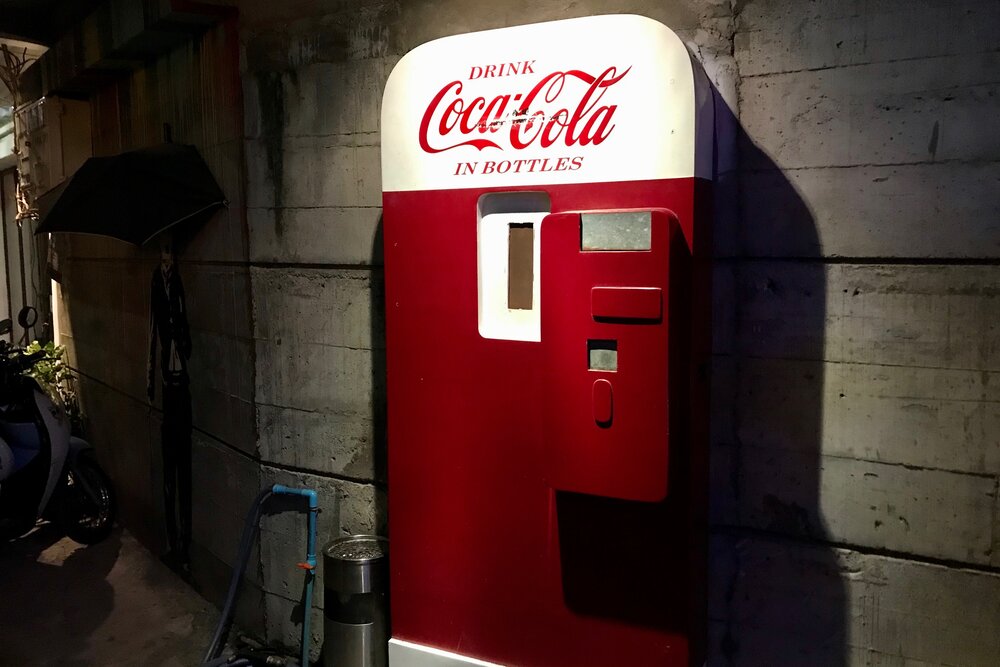
Stop #2 on the Lost Plate Hidden Bar Tour
(By the way, the word “Khmer” is the preferred adjective among natives as an equivalent to “Cambodian”, and is pronounced “kh-migh”, rhyming with “high”. So don’t be like Jessy, who, when our tour guide said “now we’re going to a Khmer place”, responded with “oh, we’re going to your place?!”)
After that, we visited a unique tuk-tuk bar on the side of the street, which served up a rare type of Cambodian rice liquor cocktail, where Jessy and I even got to get inside the tuk-tuk and mix up a few of our drinks ourselves.
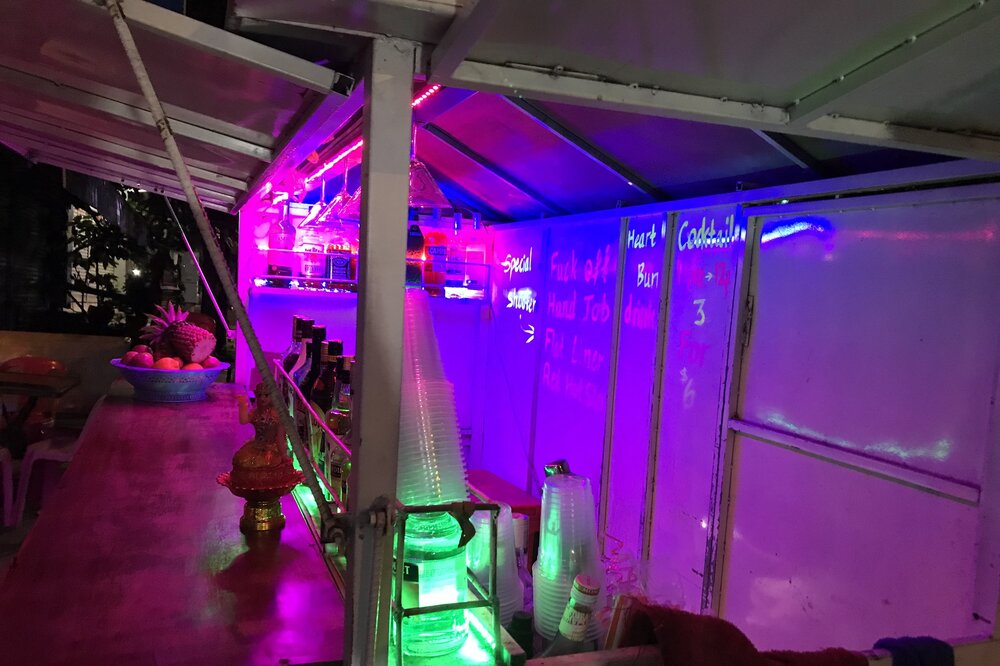
Stop #3 on the Lost Plate Hidden Bar Tour
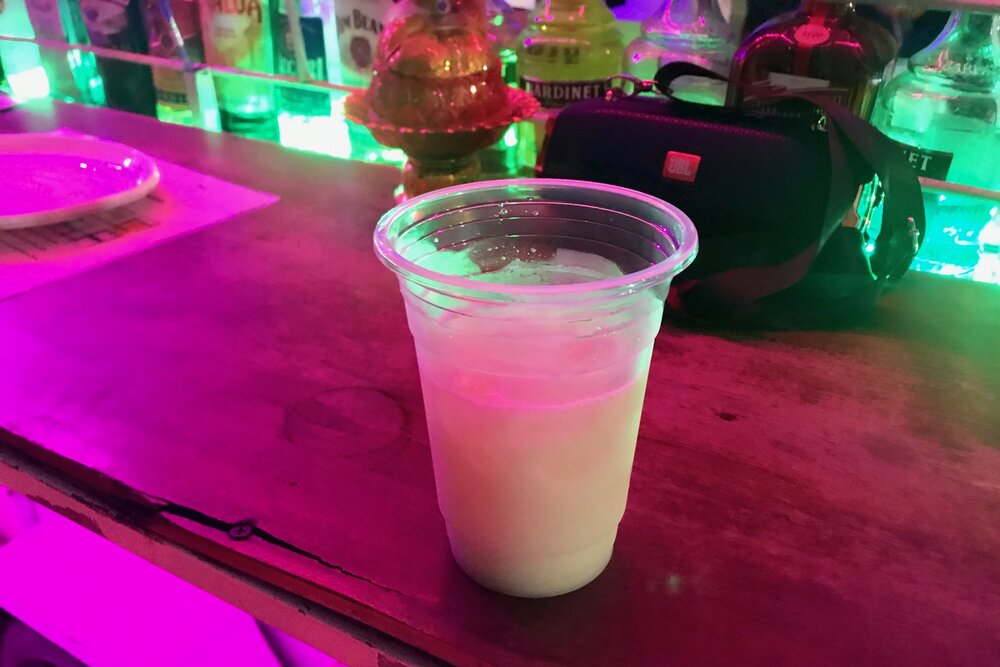
Cambodian rice liquor cocktail
We also couldn’t resist the $5 “Happy Brownie” on the menu, and it suffices to say that the evening got away from us pretty easily after that…
Lastly, another tuk-tuk ride whisked us away to a lively Phnom Penh bar street, where we settled in for a shameless sing-along with a popular local band performing mashups of 90s classics.
It was, in our tour guide Leanna’s words, “the most Khmer thing ever,” and with the hard-hitting lessons from Tuol Sleng still fresh on our minds, it was truly refreshing to witness the love of life among natives and newcomers alike here in “the Penh”.
[foogallery id=”16761″]
At the end of the night, Jessy and I somehow decided to finish the day in the same rather ill-advised fashion as we had started it: by walking back to our hotel, under cover of darkness, in our severely inebriated states. It’s a miracle we didn’t get hit by a tuk-tuk, if I’m honest.
Overall, we had a great time on the Lost Plate Hidden Bar Tour, although I definitely feel that the money would’ve been better spent on the Evening Food Tour purely in terms of the greater knowledge and understanding of Cambodia and the Khmer people that I would’ve gotten out of it. It’s one of the things I’d love to do on my next visit to Cambodia’s capital.
Indeed, after waking up rather lethargically the next day, Jessy and I sadly had very little time to spare until our onward flight to Siem Reap. As we zipped through traffic on the way to the airport, I felt a real sense of surprise that Phnom Penh, where I had very little expectations coming in, had provided so many new perspectives to take away with me in such a short time.
Conclusion
Even though Phnom Penh is often overlooked by travellers in favour of the more world-renowned temples of the Angkor Empire up in Siem Reap, the untold suffering and resilience that it has witnessed – resulting in a situation where almost everyone you meet, from your tuk-tuk driver to the girl at the convenience store, would’ve known close family members to suffer at the hands of the Khmer Rouge – is what makes it a unique place to visit.
The Khmer people no doubt carry with them the burden of genocide, but what that burden has given them is a renewed lease on life, a will to put the horrors of the past behind them and carve out a better future for themselves and their country. It was a privilege to get to know that spirit during my short time in Phnom Penh, and I’m very much looking forward to returning to experience more of it sometime soon.




















We’ve been to the war museum at Siem Reap five years ago and it was shocking. This also reminds me of the ICRC (Red Cross) Museum in Geneva Switzerland and their Humanity exhibit; well worth checking out.
The ICRC is an excellent museum. Fond memories from my time there even though it was five years ago.